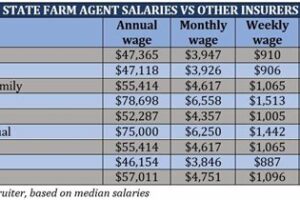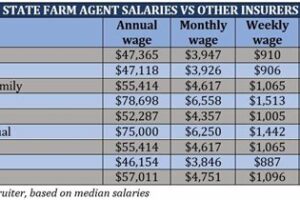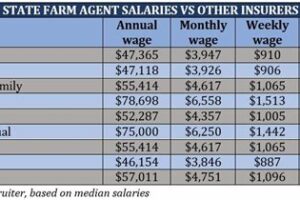Table of Contents
Discover the staggering number of farmed animals in the United States per year in this informative article. Get the facts now!
Have you ever wondered how many farmed animals are raised and slaughtered in the United States each year? The numbers are staggering, to say the least. In fact, according to the USDA’s latest report, over 9 billion land animals were raised and killed for food in 2019 alone. That’s a mind-boggling figure that can be hard to wrap your head around. But let’s break it down further. Every single day, approximately 24 million chickens, 1 million pigs, and 150,000 cows are slaughtered in the US. These animals are raised in factory farms where they endure cramped and inhumane conditions, all for the sake of cheap meat. It’s a sobering reality that raises important questions about our food system and our ethical responsibilities towards these sentient beings.
In the United States, the meat industry is a significant contributor to the economy and the food system. As a result, many animals are raised every year to meet the demand for meat, dairy, and eggs. The number of farmed animals in the United States per year is staggering, and it raises concerns about animal welfare, environmental impact, and public health. In this article, we will explore how many farmed animals are raised in the United States each year and what implications it has on various aspects of society.
The Number of Farmed Animals Raised Each Year
According to the United States Department of Agriculture (USDA), there are approximately 9 billion farmed animals raised in the United States each year. This number includes:
- Approximately 94 million cows
- Approximately 73 million pigs
- Approximately 9 billion chickens
- Approximately 300 million turkeys
- Approximately 6 million sheep and lambs
- Approximately 3 million goats
- Approximately 2 million horses
- Approximately 1 million mules and donkeys
These numbers may vary slightly from year to year, but they give us an idea of the scale of the meat industry in the United States and the number of animals involved.
The Implications of Raising So Many Farmed Animals
Animal Welfare
The large number of farmed animals raised each year raises concerns about animal welfare. In industrial farming, animals are often kept in cramped and unsanitary conditions, leading to stress, injury, and disease. This can result in a lower quality of life for the animals and increased risk of foodborne illness for humans.
Environmental Impact
The meat industry has a significant impact on the environment. The large-scale production of feed crops, such as corn and soybeans, requires vast amounts of land, water, and energy. The animals themselves also produce greenhouse gases, such as methane, which contribute to climate change. The waste generated by the animals can also pollute water sources and harm ecosystems.
Public Health
The large number of farmed animals raised each year also raises concerns about public health. The use of antibiotics in animal agriculture can lead to the development of antibiotic-resistant bacteria, which can make it harder to treat infections in humans. The crowded conditions in which animals are kept can also increase the risk of disease transmission from animals to humans.
Alternatives to Industrial Farming
Plant-Based Diets
One way to reduce the number of farmed animals raised each year is to shift towards plant-based diets. Plant-based diets have been shown to be healthy and sustainable, and they reduce the demand for meat, dairy, and eggs. This can lead to fewer animals being raised in industrial farming conditions.
Regenerative Agriculture
Another alternative to industrial farming is regenerative agriculture. Regenerative agriculture focuses on building healthy soil, increasing biodiversity, and reducing the use of pesticides and synthetic fertilizers. This can lead to healthier animals, healthier ecosystems, and more sustainable food production.
Conclusion
The number of farmed animals raised in the United States each year is staggering, and it raises concerns about animal welfare, environmental impact, and public health. However, there are alternatives to industrial farming that can lead to healthier animals, healthier ecosystems, and more sustainable food production. By shifting towards plant-based diets and regenerative agriculture, we can reduce the number of farmed animals raised each year and create a more sustainable food system.
Understanding the Scale of Farm Animal Production in the US is essential to comprehend the impact of this industry on food, environment, and society. The United States is one of the world’s largest producers of farmed animals, with millions of cows, pigs, chickens, and other species raised and slaughtered every year. According to the latest data from the USDA, approximately 9 billion farmed animals are raised and killed in the US each year, including 94 million cattle, 121 million pigs and hogs, and 9 billion chickens and turkeys. This number does not include fish and other aquatic creatures, which are farmed in aquaculture facilities across the country.
Breaking Down the Major Farmed Animal Species in the US reveals that cattle are the most abundant farmed animal in the country. They are primarily raised for beef production and dairy products, with over 94 million head of cattle reported in the latest USDA census. Dairy cows account for about 9 million of these cattle, while beef cows make up the remaining 85 million.
Pigs and Hogs are also a significant source of meat in the US, with over 121 million raised and slaughtered each year. They are primarily raised for pork production, with some used for bacon, ham, and other cured meats. Most pigs in the US are raised in confinement facilities, where they are kept in small crates or pens for their entire lives until they are sent to slaughter. This practice has been criticized for its negative impact on animal welfare and the environment.
Chicken and Other Poultry are a growing segment of animal agriculture, with over 9 billion raised and slaughtered each year. Chickens are primarily raised for meat production, while turkeys are raised mostly for Thanksgiving and other holiday meals. Poultry farming has become increasingly intensive in recent years, with birds kept in crowded, indoor facilities and fed a diet of antibiotics and growth hormones to promote faster growth and prevent diseases.
Turkeys are a lesser-known farmed animal with a big presence in the US. Although they are raised in smaller numbers than chickens, turkeys are still a significant part of the poultry industry, with over 240 million raised and slaughtered each year. They are primarily raised for meat production, with some used for breeding and egg production.
Aquaculture is another important component of animal agriculture in the US, with fish and shellfish farming taking place in coastal areas and inland waters. The most commonly farmed fish species in the US include catfish, tilapia, salmon, and trout, while oysters, clams, and mussels are the most common shellfish. Aquaculture has been praised for its potential to provide sustainable seafood and reduce pressure on wild fish stocks, but it has also been criticized for its environmental impact and potential risks to human health.
Other Farmed Animals, such as sheep, goats, llamas, and alpacas, are also raised in smaller numbers in the US. These animals are primarily used for meat, dairy, or fiber production, with some also used for animal-assisted therapy or as pets. While they may not be as abundant as cattle, pigs, or poultry, these animals play an important role in the diversity of animal agriculture in the US.
Trends in US Farmed Animal Production show that this industry has undergone significant changes in recent years, including growth, consolidation, and shifts in consumer demand. Large-scale farms have become more common, with many small and mid-sized farms struggling to compete. Consumers have become more concerned about animal welfare, the environment, and health, leading to increased demand for organic, grass-fed, and free-range products. Technology and innovation have also played a role in improving efficiency and reducing costs, but they have also raised concerns about the ethical implications of genetic engineering and other forms of manipulation.
In Conclusion, the impact of farmed animal agriculture on food, environment, and society is complex and multifaceted. While it provides a significant source of protein and other nutrients for millions of people, it also raises concerns about animal welfare, environmental degradation, and public health. As consumers, we have a responsibility to educate ourselves about these issues and make informed choices about the food we eat and the products we buy. By supporting sustainable and humane farming practices, we can help create a more just and equitable food system for all.
Have you ever wondered how many farmed animals are raised in the United States each year? Well, let me tell you, the numbers may surprise you. From cows to chickens, pigs to sheep, the United States is home to a vast number of farmed animals.
1. Cows: According to the United States Department of Agriculture (USDA), there were approximately 94 million head of cattle and calves in the United States as of January 2021. These cows are raised for their meat, milk, and other dairy products.
2. Chickens: The USDA reports that the number of chickens raised in the United States for meat production was approximately 9 billion in 2020. Additionally, there were approximately 378 million egg-laying hens in the United States in the same year.
3. Pigs: The number of pigs raised for meat production in the United States was approximately 133 million in 2020, according to the USDA. These pigs are primarily raised in large-scale operations and are used for pork products such as bacon, ham, and sausages.
4. Sheep: While not as commonly raised as cows, chickens, and pigs, sheep are still an important part of the American farming industry. The USDA reports that there were approximately 5.16 million sheep and lambs in the United States in 2020.
As you can see, the number of farmed animals in the United States is staggering. These animals are raised to provide food, clothing, and other products that we use in our daily lives. While some people may have ethical concerns about the treatment of these animals, it is important to recognize the vital role they play in our society.
Hello and thank you for reading this article about how many farmed animals are in the United States per year. It is important to understand the vast number of animals that are raised for food in our country and the impact it has on not only the animals themselves but also on the environment and our health.
As we discussed in the article, the numbers are staggering. Billions of animals are raised and killed each year for human consumption. The majority of these animals are chickens, followed by pigs and cows. These animals are often kept in cramped and unsanitary conditions, leading to health issues and cruelty. It is important for us as consumers to be aware of the conditions these animals are living in and to consider more ethical and sustainable options when purchasing meat products.
Furthermore, the environmental impact of factory farming cannot be ignored. The large amounts of waste produced by these farms contribute to air and water pollution, and the massive amounts of water required for these operations put a strain on our natural resources. By reducing our consumption of animal products and choosing more plant-based options, we can help reduce the negative impact on our environment.
In conclusion, it is important for us as consumers to be aware of the impact that our food choices have on the animals, the environment, and our own health. By making more conscious choices and advocating for more ethical and sustainable practices in the agriculture industry, we can work towards a better future for all. Thank you for taking the time to read this article and for considering the importance of this issue.
.
When it comes to the number of farmed animals in the United States per year, people often have a lot of questions. Here are some of the most common questions that people ask:
- How many cows are there in the United States?
- How many pigs are there in the United States?
- How many chickens are there in the United States?
- How many turkeys are there in the United States?
- How many sheep are there in the United States?
- How many goats are there in the United States?
As of January 1, 2020, there were approximately 94.4 million head of cattle and calves in the United States.
As of December 1, 2019, there were approximately 77.3 million pigs and hogs in the United States.
As of January 1, 2020, there were approximately 9.01 billion chickens in the United States.
As of January 1, 2020, there were approximately 244 million turkeys in the United States.
As of January 1, 2020, there were approximately 5.14 million sheep and lambs in the United States.
As of January 1, 2020, there were approximately 2.62 million goats in the United States.
Overall, the United States is home to millions of farmed animals each year. While these numbers may seem large, it’s important to remember that these animals play a crucial role in our food system and provide us with many of the foods that we enjoy on a daily basis.






